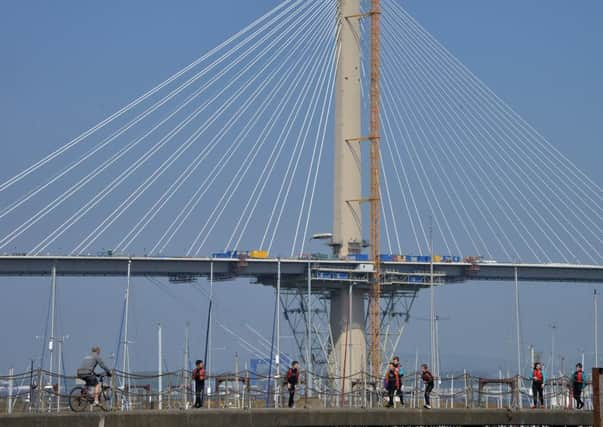Soaring house prices linked to new Queensferry Crossing


The price of a three-bedroom property in the area, as well as nearby Dalmeny, rose by more than 15 per cent over the last three months, while two and four-bedroom properties also experienced an increase according to new figures released by ESPC.
Average property prices in the town have risen by almost four times the regional average to £235,654 from £204,195 a year ago ahead of the opening of the new crossing in May next year.
Advertisement
Hide AdAdvertisement
Hide AdMaria Botha-Lopez, business analyst for ESPC, said the findings were unsurprising and believes the price increase is due to the development of transport links between Edinburgh and Fife.
“Average selling prices in Edinburgh and east central Scotland are continuing to rise,” she said.
“We have seen houses in South Queensferry show one of the largest increases which indicates that the area is increasing in popularity as a commuter town for families.
“As with the Borders Railway, new transport infrastructure is often a big draw for home-movers, particularly when commuting is a consideration.
Advertisement
Hide AdAdvertisement
Hide Ad“People are more likely to purchase a property as construction nears completion, rather than when it is just beginning, so this could explain why we have seen an increase in both the number of homes being sold as well as an increase in selling prices.
“The Queensferry Crossing has drawn interest to South Queensferry as it shows there is the opportunity for investment and infrastructure, meaning that people will consider it as an option if they are commuting to Dunfermline and beyond, but wish to remain close to Edinburgh.
“South Queensferry is an attractive small town with scenic views over the water and a quieter pace of life, and this also makes it an ideal place to raise a family.”
Property prices in the centre of Edinburgh experienced another rise, increasing by five per cent from the previous year’s figures.
Advertisement
Hide AdAdvertisement
Hide AdAnd, according to property experts Neilsons, the price hike in the centre could be forcing more of the capital’s potential homeowners further outside the city.
“Selling prices have increased in a number of key areas in Edinburgh and the Lothians and there has been a notable increase in selling prices in South Queensferry,” a spokesman for the company said.
“As the Edinburgh market starts to overheat people turn to satellite towns for better value for money.
“They begin to analyse each satellite town and look at what makes each a good choice for moving there and South Queensferry would be near the top of the list for amenities, schools and ambience.” However, Keith Giblett, leader of the town’s community council, disagrees, and believes the area has always been popular with those looking to move outside the city.
Advertisement
Hide AdAdvertisement
Hide Ad“Honestly, I don’t think the new crossing is the root cause of the increase in prices,” he said.
“South Queensferry is a beautiful area with good schools without the busy nature of city life which makes it understandable why people want to live here.
“It offers a more attractive prospect than somewhere like West Lothian with the benefit of having Fife on one side of the river and Edinburgh on the other. But in terms of commuting, I think that people are much more likely to use public transport links, in particular rail; the trains between South Queensferry and/or Dalmeny and Edinburgh are always busy.”
Elsewhere in the capital, property in Juniper Green, Currie and Balerno experienced the biggest hike in prices, with some three-bedroom houses rising in price by over a fifth, more than four times the regional average for east central Scotland.
Advertisement
Hide AdAdvertisement
Hide AdAreas in the east of the city including Abbeyhill and Meadowbank saw an increase of 11 per cent, while property in Stockbridge and Gorgie rose by less than one per cent. However, homes in Corstorphine, South Gyle, East Craigs and Clermiston saw the largest fall, suffering a five per cent drop in average prices.